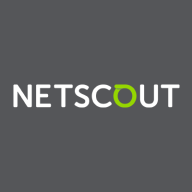

SCOM and NETSCOUT vSTREAM compete in the network management space. NETSCOUT vSTREAM has the upper hand due to its extensive feature set, making many feel it justifies its pricing.
Features: SCOM provides detailed monitoring and diagnostics for Microsoft environments, integrates with Microsoft tools, and offers a user-friendly interface. NETSCOUT vSTREAM features robust packet-level traffic analysis, broader network visibility, and advanced analytics capabilities.
Room for Improvement: SCOM could enhance its network monitoring capabilities, improve its scalability for larger environments, and expand its non-Microsoft integrations. NETSCOUT vSTREAM may benefit from simplifying its deployment process, reducing its resource-intensive setup, and offering more competitive pricing options for smaller businesses.
Ease of Deployment and Customer Service: SCOM offers a straightforward deployment model in Microsoft-centric environments with solid customer service. NETSCOUT vSTREAM requires a more complex deployment but provides thorough guidance and training during the process.
Pricing and ROI: SCOM attracts budget-conscious buyers with its lower upfront cost, prioritizing initial investment. NETSCOUT vSTREAM demands a higher initial setup cost but delivers increased ROI over time with its advanced capabilities, making it appealing to enterprises seeking in-depth insights.
| Product | Market Share (%) |
|---|---|
| SCOM | 1.7% |
| NETSCOUT vSTREAM | 0.3% |
| Other | 98.0% |

| Company Size | Count |
|---|---|
| Small Business | 16 |
| Midsize Enterprise | 22 |
| Large Enterprise | 54 |
The vSTREAM virtual appliance complements existing Adaptive Session Intelligence (ASI)-based instrumentation to provide the same level of visibility within virtualized and cloud infrastructures that is already possible in physical environments. The vSTREAM virtual appliance is ideal for monitoring service-critical traffic running within virtualized or cloud infrastructures, either locally on a host or as an aggregation point for multiple hosts. With complete visibility across physical, virtual and cloud networks, the vSTREAM virtual appliance presents real-time views of end-to-end call trace data and network-wide KPIs, to protect the reliability and availability of networks and application services.
SCOM (System Center Operations Manager) is a cross-platform data center monitoring and reporting tool that checks the status of various objects defined within the environment, such as server hardware, system services, etc. The solution allows data center administrators to deploy, configure, manage, and monitor the operations, services, devices and applications of multiple enterprise IT systems via a single pane of glass. It is suitable for businesses of all sizes.
SCOM Features
SCOM has many valuable key features. Some of the most useful ones include:
SCOM Benefits
There are several benefits to implementing SCOM. Some of the biggest advantages the solution offers include:
Reviews from Real Users
Below are some reviews and helpful feedback written by PeerSpot users currently using the SCOM solution.
A Manager at a financial services firm says, “The feature I like most about SCOM is that it is easy-to-use. I find it very user-friendly. I also like the knowledge base which it has. You can find the resolution to questions or issues directly within the SCOM itself. It will alert you with a recommendation of what you need to do at the same time. This sort of self-diagnosis or prompting is one of the great values you get from SCOM compared to other solutions.”
PeerSpot user Zahari Z., Information Technology Auditor at a financial services firm, mentions, “Availability monitoring is the feature I have found most valuable, as well as the capacity and ability to send notifications. There is a mechanism to set up a notification from the SCOM and whenever there is a drop in the availability the notification alerts not only for availability but for other issues as well. You can align thresholds according to the speed of your environment and you can have a threshold related notification, which is one of the useful features.”
Bill W., Sr. Systems Engineer at Arapahoe County Government, comments, “ I like some of their newer features, such as maintenance schedules, because SCOM records SLA and SLO time. When we patch, things are automatically put into maintenance mode so that the numbers for our systems being down, do not count against us.”
A Project Manager at a tech services company explains, “The feature I have found most valuable is the book feature. While we run the Sprint one we can add some setups for multiple sprints.”
A Systems Engineer at an educational organization states, “Because it's Windows-based, it actually reports quite well. It reports everything you can think of on the Windows server and allows you to monitor anything. It's excellent for those in the Windows world as it's very good at it.”
We monitor all Network Monitoring Software reviews to prevent fraudulent reviews and keep review quality high. We do not post reviews by company employees or direct competitors. We validate each review for authenticity via cross-reference with LinkedIn, and personal follow-up with the reviewer when necessary.